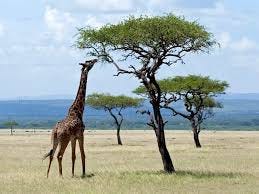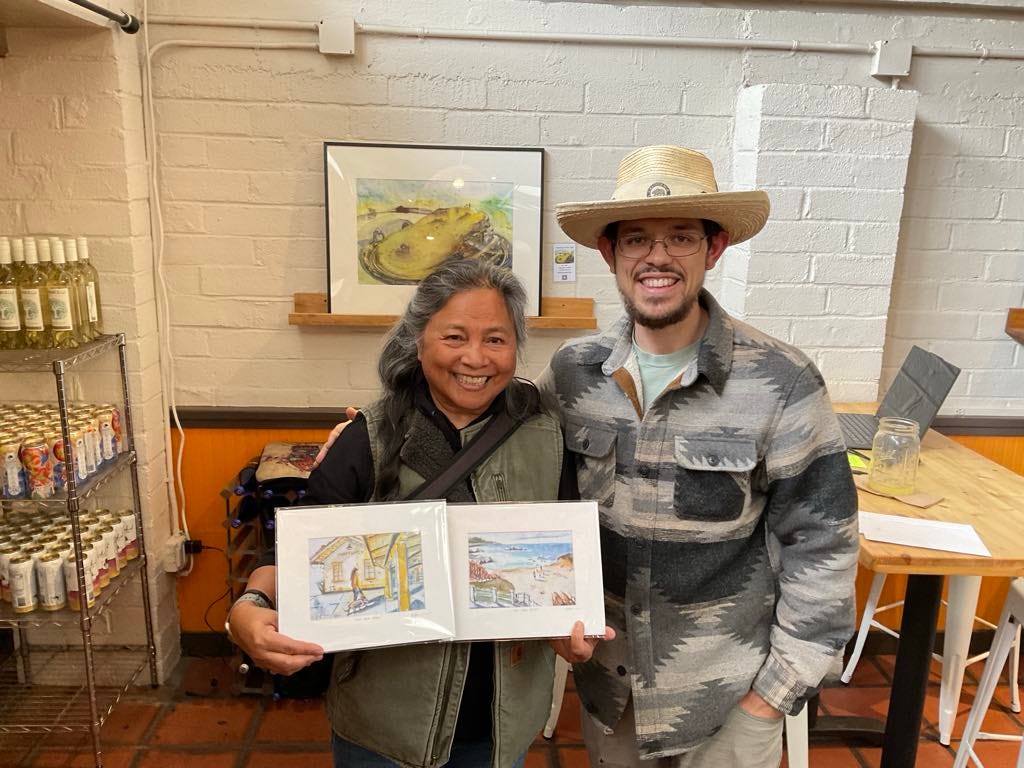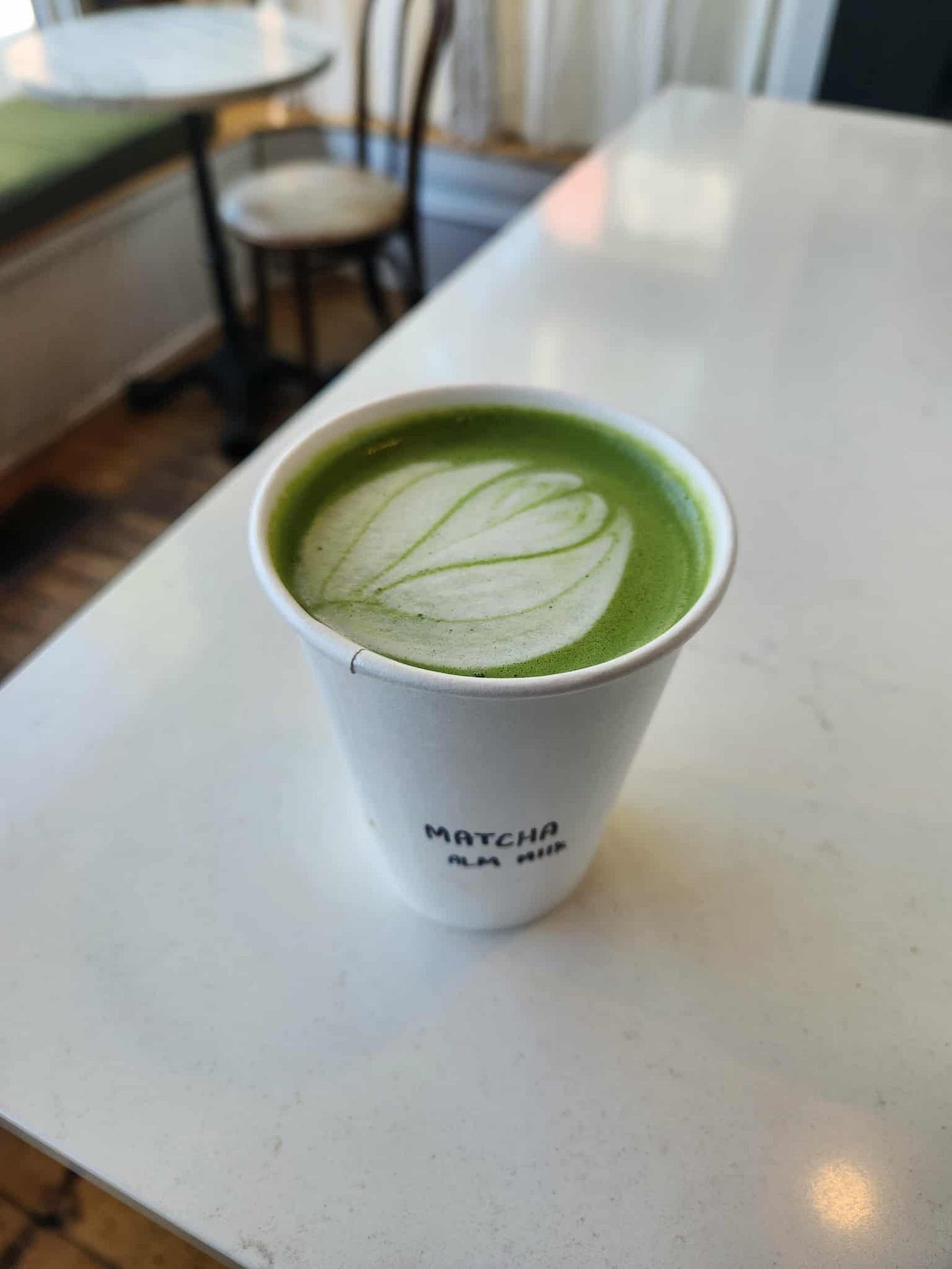Learn to Speak Watercolor Fluently:
Johnson O’Connor’s Vocabulary Wisdom for Deeper Watercolor Art Appreciation
Watercolor, like any art form or skill, can be learned. Creating Mood and Atmosphere communicates visual unspoken rhythms about life that fill our soul with Truth, Beauty, and Goodness. But many do not realize that language for this unseen ethereal world exists and, once understood and harnessed, can lead to deeper life satisfaction for both shared and personal experiences. As we discussed in April, what makes watercolor so mesmerizing can be appreciated best when the dialect is understood. Click here to read April’s discussion if curious.
But first, where do Ideas begin?
“Ideas begin as feelings in the heart that become thoughts in the brain and are manifested into reality.” Paraphrase from Dr. Darlene A. Lobel MD,
Neurosurgeon and Neuroscientist

Although curious and all be it strange, science is catching up to many perceived ancient traditions and hunches. For Instance, the ancient Egyptians revered the heart so much as the center of emotion that they discarded the brain and preserved the heart in their famed mummification and embalming processes-believing it would be needed for the afterlife. Interesting, but what’s more important for our discussion is that we understand your heart is truly a major driver in experiencing, discerning, and appreciating beauty through the arts and enriching your quality of life. Perhaps the ancient Egyptians were on to something ??? Now, how to get this maximized state and who is this Johnson Fellow anyway…..

Building confidence and intrigue through familiarity with terms with Johnson O’ Connor
Johnson O'Connor was an American psychometrician, researcher, and educator. He is most remembered as a pioneer in the study of aptitude testing and as an advocate for the importance of vocabulary. His simple takeaways of vocab were revolutionary for helping Americans better find contentment and fulfillment in their everyday lives, work, hobbies, and general interests. A synopsis of his impact is below, which we will reference.
Johnson O’ Connor study:
Much of Johnson O'Connor's groundbreaking vocabulary research was
conducted during the Stevens Institute years, resulting in a popular
publication Vocabulary and Success, as well as The English Vocabulary
Builder. In a 1934 article published in The Atlantic, O'Connor wrote: "An
extensive knowledge of the exact meanings of English words
accompanies outstanding success in this country more often than any
other single characteristic which the Human Engineering Laboratories
have been able to isolate and measure," O'Connor was often interviewed
on the subject of vocabulary and its importance to success, and his
findings were widely reported for decades. He was even quizzed about
vocabulary as a guest on The Groucho Marx Show in 1961.
A Brief excerpt from Johnson O’Connor’s February 1934 Article in the Atlantic
“WHAT is success? And how is it gained? Whether one thinks of success as financial reward, or as assured social position, or as satisfaction in able work accomplished and recognized, or as a combination of the three and something more, many factors contribute. Most of them elude our understanding and remain intangibly beyond definition. A vital force drives some individuals over every obstacle. With others that great generalization, character, adds strength of a different sort. Neither may ever be restricted to a hard and fast formula; certainly, at the moment, neither can be measured. But other more concrete constituents of success have been isolated and studied in the laboratory. One of these is a large English vocabulary.
An extensive knowledge of the exact meanings of English words accompanies outstanding success in this country more often than any other single characteristic that the Human Engineering Laboratories have been able to isolate and measure.”

Taking your Art Appreciation and enjoyment to the next level
The Johnson O’ Connor example is meant to encourage ANYONE that watercolor, although mysterious, has a fun language associated with it that is useful to self-study, the art collector, or the curious wonder-seeker.
Does this mean you need to understand every watercolor art term to be successful at understanding watercolor or even enjoy it? No, but whatever you take away from this glossary list, I hope it feeds your curiosity and wonder about art making, museum-going, and future artworks that grace your homes. The world, despite modern enlightenment beliefs, does not need to be fully understood to enjoy your life, nature, God, the world around us, and gratitude for the simplicity in our everyday lives.
Rather, This Knowledge is like learning a specific dialect or a generally accepted way of doing things. For instance, I love listening to Gaelic being sung and Celtic music. Will I ever fully learn the language? probably not, but it makes me feel inspired when I’m creating art, and that alone has value in of itself. I may choose to learn catch phrases along the way or even be able to translate the words to my favorite songs into english and sing it, but much past that my limited understanding will not impede my ability to enjoy it, but rather any new knowledge I gain even if miniscule compared to a native speaker greatly improves my enjoyment of the language and artistic use overall.

Another way to think of it is like the Rules in a game. The rules you know help everyone be on the same page, so it’s easier to follow and engage with one another. Our goal is to better facilitate understanding through the following art terms for greater shared meaning and conversation for everyone’s benefit.
Essentially, when we better understand the words associated with our hobbies, interests, jobs, and world around us, it becomes easier to appreciate and enjoy the limitations of our skill set and admire or aspire to achieve it ourselves.
How and why do these Watercolor and Art glossary of terms I will present matter? These are terms I will reference from here on out and for your maximum enjoyment and understanding this will build a simple roadmap into wonder. In later posts I intend to be build more depth with demonstrations, photos, and greater details. For now let’s begin with simple:
Review from April: In the coming months, I will begin to add one new art term to expand our horizons and gradually maximize your watercolor and overall art appreciation, and with Johnson O’Connor’s research, you now know why!
Last time we covered these terms:
Watercolor Art: Any artwork that is created by using watercolor as a medium is known as watercolor art.
Binder: the substance that holds pigment particles together and allows the paint to adhere to a surface like canvas, paper, or wood. It acts as a glue, creating a cohesive film after the paint dries.
Gum Arabic: a natural, water-soluble gum, primarily used as a binder in watercolor painting.
Glazing: a painting technique where a thin, transparent layer of paint is applied over a previously painted layer, allowing the underlayer to show through and creating a sense of depth and luminosity.
“Let Go, To Breathe, Not be overworked”:
Let Go: In watercolor, “Let Go” refers to allowing the medium’s natural flow to take over, embracing its unpredictability.
To Breathe: “To Breathe” in watercolor artworks means leaving areas of the paper untouched or lightly painted, giving the composition space and airiness.
Not Be Overworked: “Not Be Overworked” means avoiding excessive layering or reworking of paint, which can muddy colors and lose transparency—a hallmark of watercolor.
Medium: In art, "medium" refers to the material an artist uses to create a work of art.
Opaque Medium: In art, an opaque medium is one that completely blocks light from passing through it. This means you can't see through it, and it covers the underlying surface completely.
Transparent Medium: In art, a transparent medium allows light to pass through it without significant scattering, resulting in a clear view of objects behind it.
Luminosity: In art, luminosity refers to the quality of a work that evokes a sense of light and glow, often appearing to emanate from within the painting or artwork itself.
Art Show Update:
Our Show at Carmel Belle is now reaching the final two weeks. Be sure to check it out and shop our original art or mini art prints in person or online. If you missed this post, see all the details on how to get there and what to expect by clicking the button below.
Why do you care? What’s in it for you?
Until Fathers Day I’m offering limited Time FREE SHIPPING NATIONWIDE on any painting when you USE CODE “LOCAL831” Hurry Time is ticking…..
Directions to Adam's Latest Art Show
Family Corner and Artist Updates:
Summer is now in full swing and me and the kids have starting doing Plein Air Painting together on fun trips I call “Sketch n’ Hikes”. We have fun plans to explore the Monterey and Big Sur area more while soaking up the sun.
In Other News…..
I recently just got back from PACE 2025 in RENO, NV, and Lake Tahoe with Eric Rhoads. This is always an incredible opportunity to meet other professionals and learn new skills for my toolbox. Here are some highlights through pictures below:
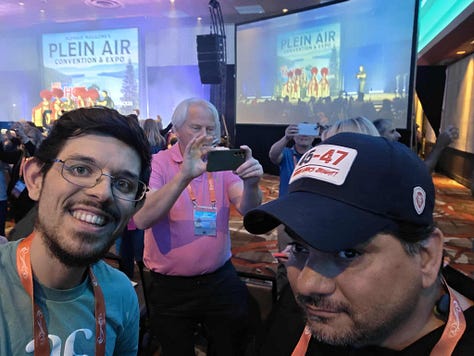
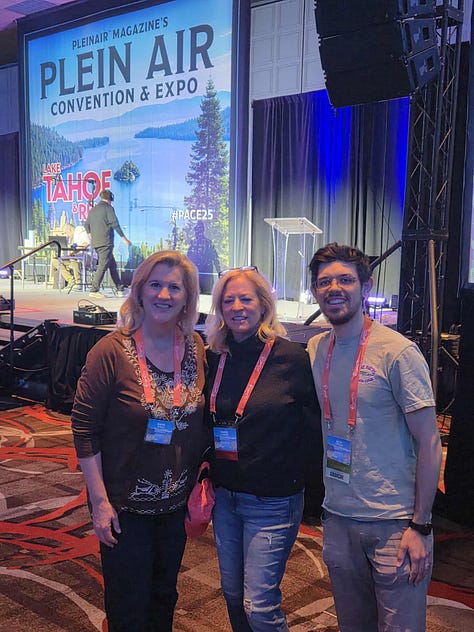
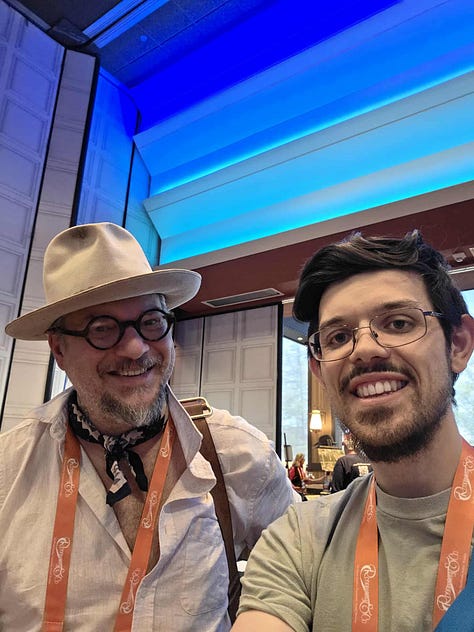
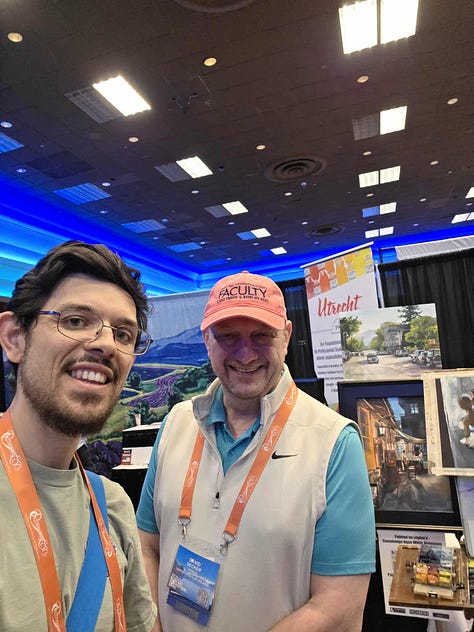
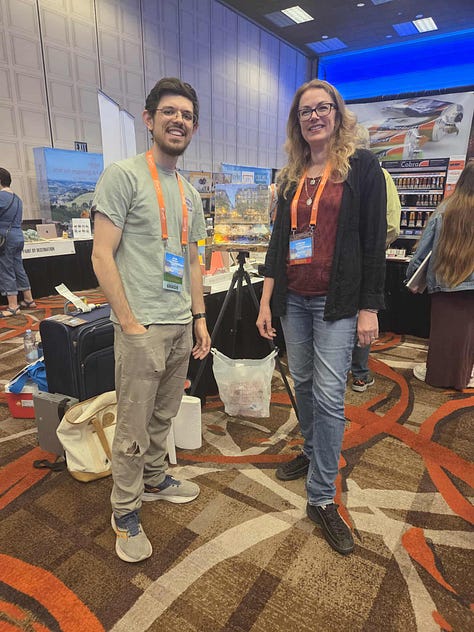
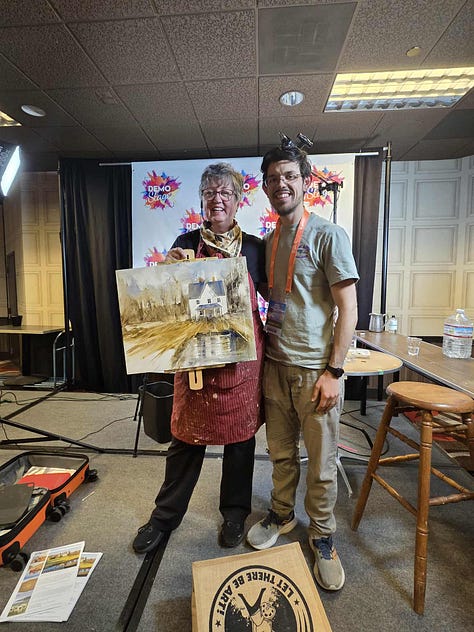
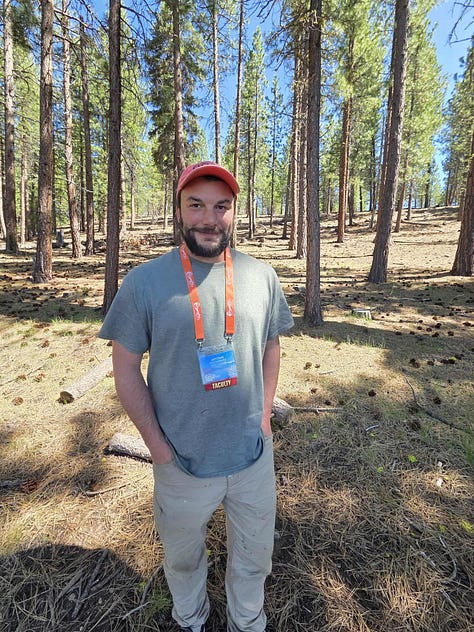
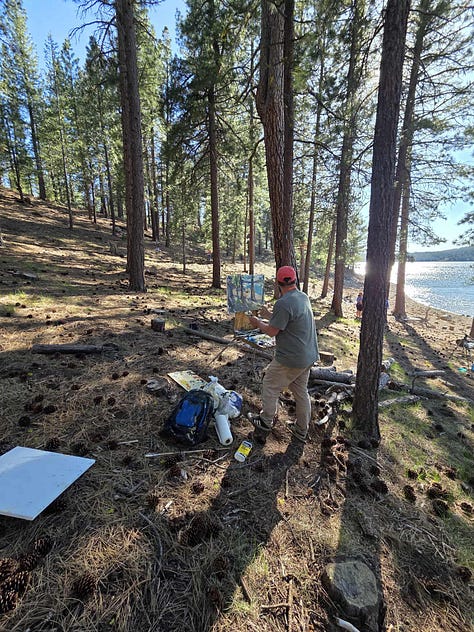
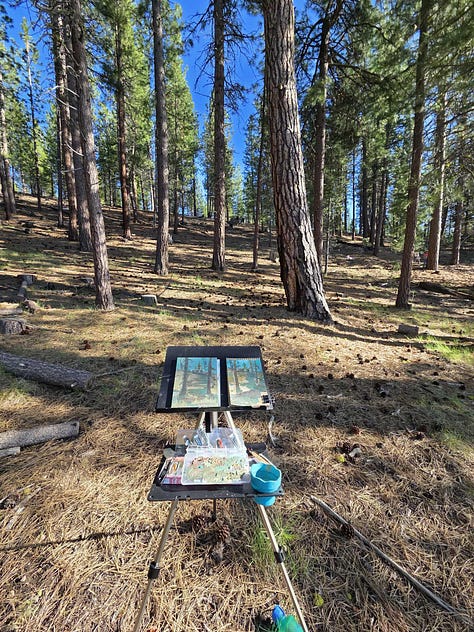
From Left to Right, Top to Bottom
Me with my Art and Composition Coach Don Victor Vargas
Pose with artist Carrie Curran and a Friend
Meeting famed watercolor artist Dan Marshal, opportunity for mentorship, haha!
Meeting David Becker, fellow Holbein and Legion Material User
Demo with Christine Lashley on Paris Street Scene, Nationally acclaimed Oil Painter
Demo with Beth Bathe, recent inductee into the American Society of Marine Artists
Antonin Passemard, French Oil Artist and Teacher from Burgundy
Antonin is displaying his Bold Impressionism approach at Lake Tahoe
Me experimenting with Gouache, a kemper, and a palette knife at Lake Tahoe. I never felt more like an artist when I was painting next to my French Friend, Antonin. It felt very avant-garde, like I was in France on the Seine River and experimenting with the Impressionists. so 1877….. haha!
Happy belated Memorial Day. Go Catch some sun!
-Adam Hansen
Fine Artist and Designer






